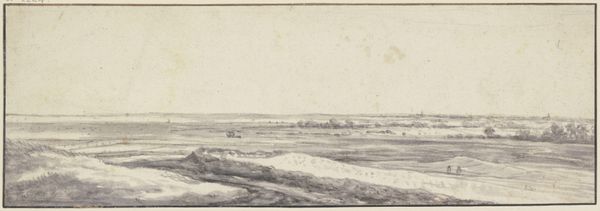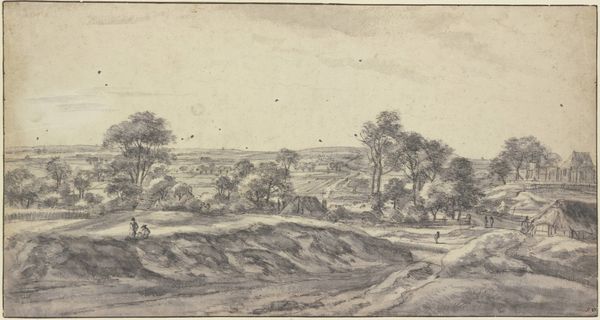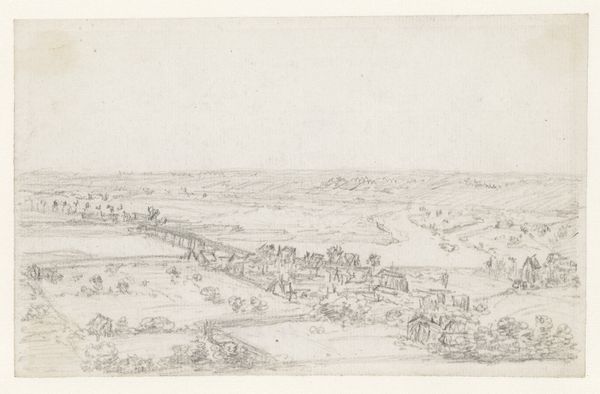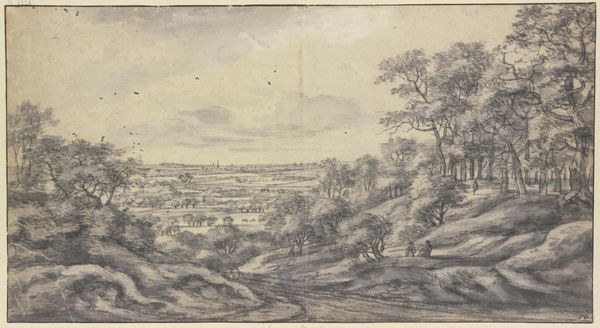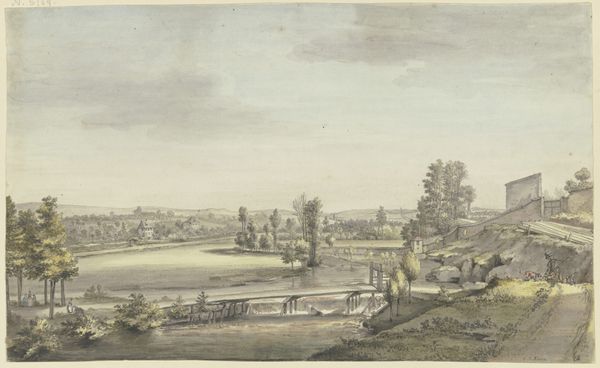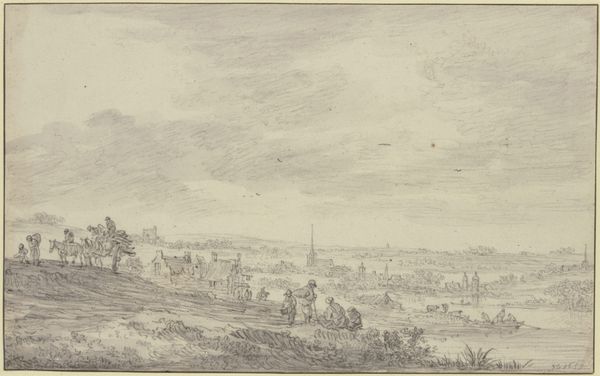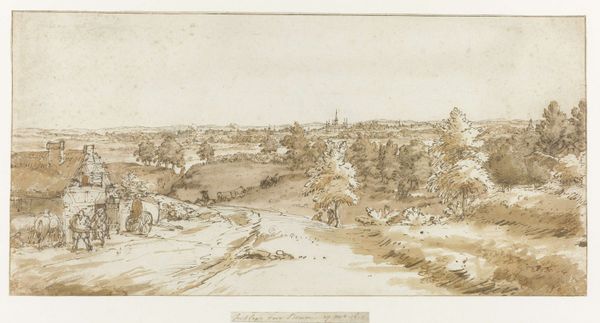
Landschaft mit einem Fluß, links Gebäude unter Bäumen, auf der Landstraße ein Wagen und einige Figuren
0:00
0:00
drawing, paper, pencil
#
drawing
#
baroque
#
landscape
#
paper
#
pencil drawing
#
pencil
Copyright: Public Domain
Curator: Here we have "Landscape with a River, Buildings on the Left under Trees, a Wagon and Several Figures on the Country Road," a pencil drawing by Anthonie Waterloo, currently held at the Städel Museum. Editor: It's subtle, almost ethereal. The grey hues give it a feeling of looking at something fading into memory, or a dreamscape. Curator: Waterloo's landscapes, and this one exemplifies his style, often focus on the spatial arrangement of elements. Note how the composition divides the scene into distinct zones using the river and land. He is playing with planes. Editor: And there's a direct relationship between those zones. It all hinges on the rendering. This type of rendering, typical for studies of this era, would’ve likely utilized locally sourced graphite applied to inexpensive paper. How immediate the work becomes when thinking of accessibility and its practical means of creation. Curator: It certainly points towards the pragmatic purpose. I find that it successfully constructs depth through tonal variation. See how darker values establish the foreground with details diminishing into fainter greys, suggesting atmospheric perspective. It adheres to specific and successful conventions. Editor: Right, but beyond perspective, consider the economic implications! Cheap paper, easily obtainable graphite—this wasn’t an artist reliant on the luxury trade of precious pigments. Waterloo makes a drawing available in principle for all by minimizing dependence on imported material economies. Curator: A point well taken, however, I’m still fascinated by its overall structural cohesion. Consider the repoussoir of the trees on the left acting as a framing device. And how this then leads the eye toward those diminutive figures. A classical touch in organizing pictorial space. Editor: Agreed, these intentional decisions make its material context even more fascinating. He understood these formal properties but operated with accessible tools. It brings his entire process down to earth, grounded in tangible and humble labor. Curator: Absolutely, this drawing's strength emerges from this dichotomy. Thanks for highlighting it. Editor: My pleasure. Seeing these points together deepens my appreciation, revealing the hand of an artist connecting accessible labor with enduring beauty.
Comments
No comments
Be the first to comment and join the conversation on the ultimate creative platform.
